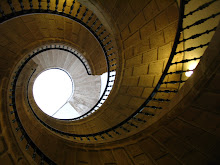According to Qing Zhang, a professor of linguistics at the University of Texas, Chinese is one of the toughest languages to learn. First, the meaning of each sound depends on tone. Worse, students must memorize thousands of picture-like characters instead of the 26 letters that make up English words.
Since the test began in 2005 fewer than 10 foreigners have passed.
The simplest Chinese word is the character for 'one' which is a single horizontal line; the most complex requires 56 strokes.
This is my first attempt at (Chinese) love:














